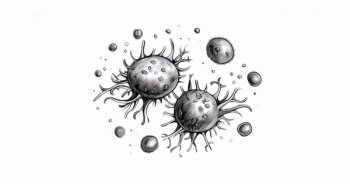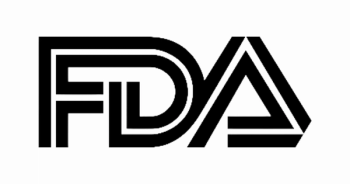
Targeted Therapies in Oncology
- December II, 2024
- Volume 13
- Issue 16
- Pages: 47
“Sky Is the Limit” for ADC Possibilities in NSCLC
Recent regulatory activities suggest that the understanding of TROP2-directed therapies remains muddled.
TROP2-directed therapies, specifically antibody-drug conjugates (ADCs), have evolved in non–small cell lung cancer (NSCLC) with the approval of fam-trastuzumab deruxtecan-nxki (Enhertu; T-DXd). Continued research is exploring existing ADCs that have shown promise in other cancer settings, such as sacituzumab govitecan (Trodelvy), and novel ADCs are undergoing early drug evaluation. Recent regulatory activities also suggest that the understanding of TROP2-directed therapies remains muddled.
Melissa L. Johnson, MD, explored the current state of TROP2-directed ADCs in NSCLC during the 42nd Annual CFS, an event sponsored by Physicians’ Education Resource, LLC.1
“As we consider ADCs in lung cancer, I want you to think about how the components [of the ADC], such as the linker, the target antibody, and the payload, are being [changed and substituted],” Johnson, director of lung research at Sarah Cannon Research Institute in Nashville, Tennessee, said during her presentation. Each component of the ADC has intrinsic properties that determine specific tasks when it encounters a cancer cell.2
Johnson noted that AstraZeneca and Daiichi Sankyo have filed a new biologics license application (BLA) for accelerated approval for datopotamab deruxtecan (Dato-DXd) for the treatment of adult patients with locally advanced or metastatic EGFR-mutated NSCLC who have received prior systemic therapies, including an EGFR-directed therapy.
Overall Survival
The companies had voluntarily withdrawn the BLA for the agent in patients with advanced or metastatic nonsquamous NSCLC based on results from the phase 3 TROPION-Lung01 trial (NCT04656652).3 Although findings from the phase 1 TROPION-PanTumor01 trial (NCT03401385) evaluating Dato-DXd showed promise,4 with durable responses in patients with lung cancer who were otherwise treated with docetaxel, the findings reported at the European Society for Medical Oncology Congress 2024 in September were somewhat murky for overall survival.5
Investigators presented a post hoc analysis of patients with nonsquamous NSCLC who had baseline brain metastases. As of the data cutoff of March 29, 2023, 43 patients were assigned to receive Dato-DXd and 41 were assigned to receive docetaxel. Dato-DXd prolonged PFS longer than docetaxel regardless of brain metastases status. Median PFS was 4.9 vs 3.6 months in patients with brain involvement, respectively (HR, 0.59; 95% CI, 0.35-1.00). In patients without brain involvement, PFS was 5.7 vs 3.7 months, respectively (HR, 0.64; 95% CI, 0.50-0.81).5
“This was the pivotal trial [TROPION- Lung01] in which patients who initially received chemotherapy and immune therapy were randomly assigned to receive Dato-DXd vs docetaxel,” Johnson said. “At the end of the day, the overall survival was negative for this group of patients,” Johnson continued.
When PFS was compared by histology, patients with nonsquamous histology who were treated with Dato-DXd had a median PFS of 5.6 months (95% CI, 4.4-7.0) vs 3.7 months (95% CI, 2.9-4.2) in those treated with docetaxel (HR, 0.43; 95% CI, 0.51-0.78). Patients with squamous histology who were treated with Dato-DXd had a median PFS of 2.8 months (95% CI, 1.9-4.0) vs 3.9 months (95% CI, 2.8-4.5) in those treated with docetaxel (HR, 1.38; 95% CI, 0.94-2.02).
“Diving into the data a little bit more, we find that the co–primary end point was PFS, and it was positive in favor of Dato-DXd vs docetaxel,” Johnson said. “For patients with nonsquamous histology, the PFS was in favor of Dato-DXd, compared with those patients with squamous histology, with data favoring docetaxel,” Johnson said. “So maybe TROP2-directed therapies may not be good for all patients in the second line and beyond?”
ADC Permutations
Sacituzumab govitecan, currently indicated in triple-negative breast cancer (TNBC), is undergoing evaluation in NSCLC. In patients with TNBC, the agent was evaluated in the phase 3 EVOKE-01 study (NCT05089734) vs docetaxel.6 The primary end point was OS, and key secondary end points were PFS, objective response rate, and safety.
Paz-Ares et al noted that the primary end point was numerically improved but not statistically significant.6 The ADC was better tolerated than docetaxel, and no new safety signals were observed. “Yet again, we seem to be stuck,” Johnson said. “We can’t use this drug in all patients, so we probably need to dig deeper into the data to figure out who is truly benefiting.”
Other TROP2-directed ADCs undergoing evaluation include patritumab deruxtecan (HER3-DXd) in the phase 2 HERTHE- NA-Lung01 trial (NCT04619004); BL-B01D1, an ADC consisting of an EGFR×HER3 bispecific antibody bounded to a novel TOP-I inhibitor payload via a cleavable linker that is under study in a phase 1 trial (NCT05194982); sigvotatug vedotin in the phase 3 Be6A Lung-01 study (NCT06012435); and telisotu- zumab vedotin in the phase 2 LUMINOSITY trial (NCT03539536).
“The sky is the limit when it comes to all these permutations. We have just begun to scratch the surface. I hope I’ve shown you the importance of patient selection in the clinical trials that we conduct,” John- son concluded.









































